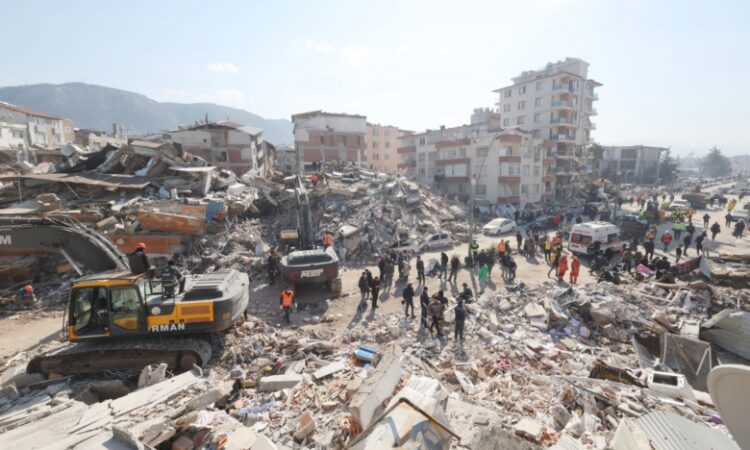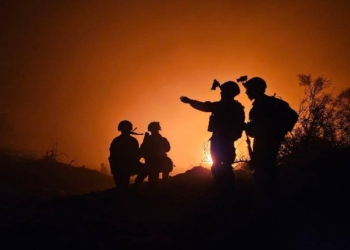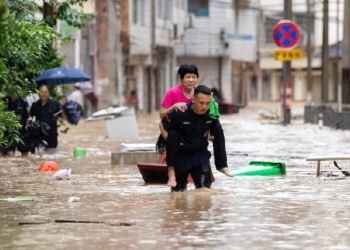Ankara: More than a week after two massive earthquakes leveled a swathe of Turkey’s southeastern region, hundreds of thousands of people have left the quake-hit zone in search of a new life in other cities.
“To return and live there seems very difficult as there is extensive damage. From now on, I would like to continue my life here and go to school in Ankara,” Orcun Kabatas, a teenager from Hatay province, told Xinhua news agency.
The 16-year-old earthquake victim was playing ping-pong with newly acquainted friends who are also from the disaster zone in a relief center of the capital city Ankara’s Mamak district. The center is part of a residential complex of flats that is now home to around 3,500 earthquake survivors.
Furkan Kurt, a 14-year-old student from Adiyaman, another province hit by the catastrophe, said although he and his family members were not harmed by the tremors, the family of his cousin was killed under the rubble of their building.
“We do not want to return to Adiyaman because all houses have been destroyed, and there is nowhere to live there anymore,” the boy said.
After a disaster of such scale, the boy still has his dream for the future as all young people have.
“I want to go to school and become a police officer, and this is my biggest dream,” he said.
According to the Disaster and Emergency Management Authority, at least 216,347 earthquake victims have been evacuated by the government to other cities following the magnitude 7.7 and 7.6 earthquakes that hit southeastern Turkey and northern Syria on February 6.
But this number doesn’t include hundreds of thousands of survivors who left the zone by their own means since the first day of the tragedy, to live with relatives or friends or to make do with urgent social assistance provided to them.
It is estimated that over two million people have scattered in towns like Mersin, Antalya, Izmir , Istanbul, and the capital city of Ankara.
Speaking two days after the disaster in Kahramanmaras, near the epicenter of the quakes, President Recep Tayyip Erdogan promised the country would provide immediate assistance to displaced people.
“We cannot let our citizens stay on the streets,” he said.
Erdogan also promised on Tuesday in a televised address following a cabinet meeting to hasten the reconstruction process, pledging to rebuild the demolished structures in a broad area of southern Turkiye within a year.
“We are starting the construction of 30,000 houses in early March,” he added, referring to the earthquakes as “the disaster of the century”.
While some survivors want to settle down and begin their new life outside the disaster zone, some are eager to return to their hometowns as soon as possible.
Bayram Sahinoz, a car wash worker from Elbustan, a district of Kahramanmaras province, is one of them.
“In the Elbistan district of Kahramanmaras province, where I live, the damage is colossal, up to 400 buildings collapsed,” he said.
Nevertheless, he is keen to return to his hometown with his wife.
“I think that we will temporarily stay here for several months until recovery and relief efforts are stepped up in Elbistan, and we will eventually return home,” he added.
The death toll of the worst disaster in the history of Turkiye stood at 36,187 on Thursday, with more than 108,000 injured.
To resettle earthquake victims, more than a dozen of tent and container camps have been erected in the disaster zone by the government, and private and foreign relief organizations. But the local demand is huge.
The regions affected by the twin earthquakes are home to an estimated 13.4 million people, including as many as 2 million refugees, primarily from Syria.
In a sign of solidarity, many families and municipalities from central and western Turkiye have opened their homes or facilities to accommodate earthquake victims.
Meanwhile, the government has decided to postpone the opening of universities across Turkiye. Schools and dormitories have been opened to accommodate the survivors of the earthquakes.
(IANS)















